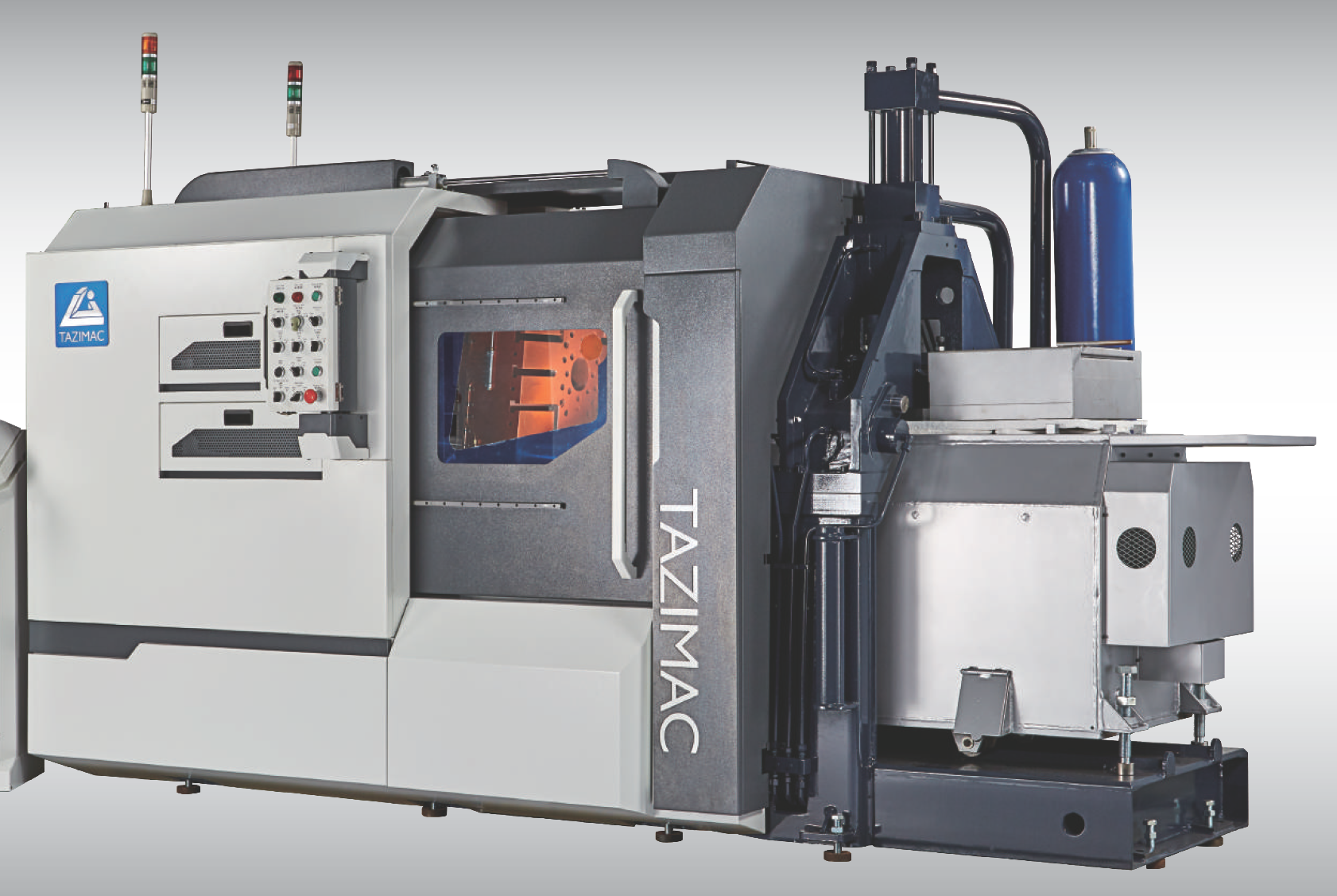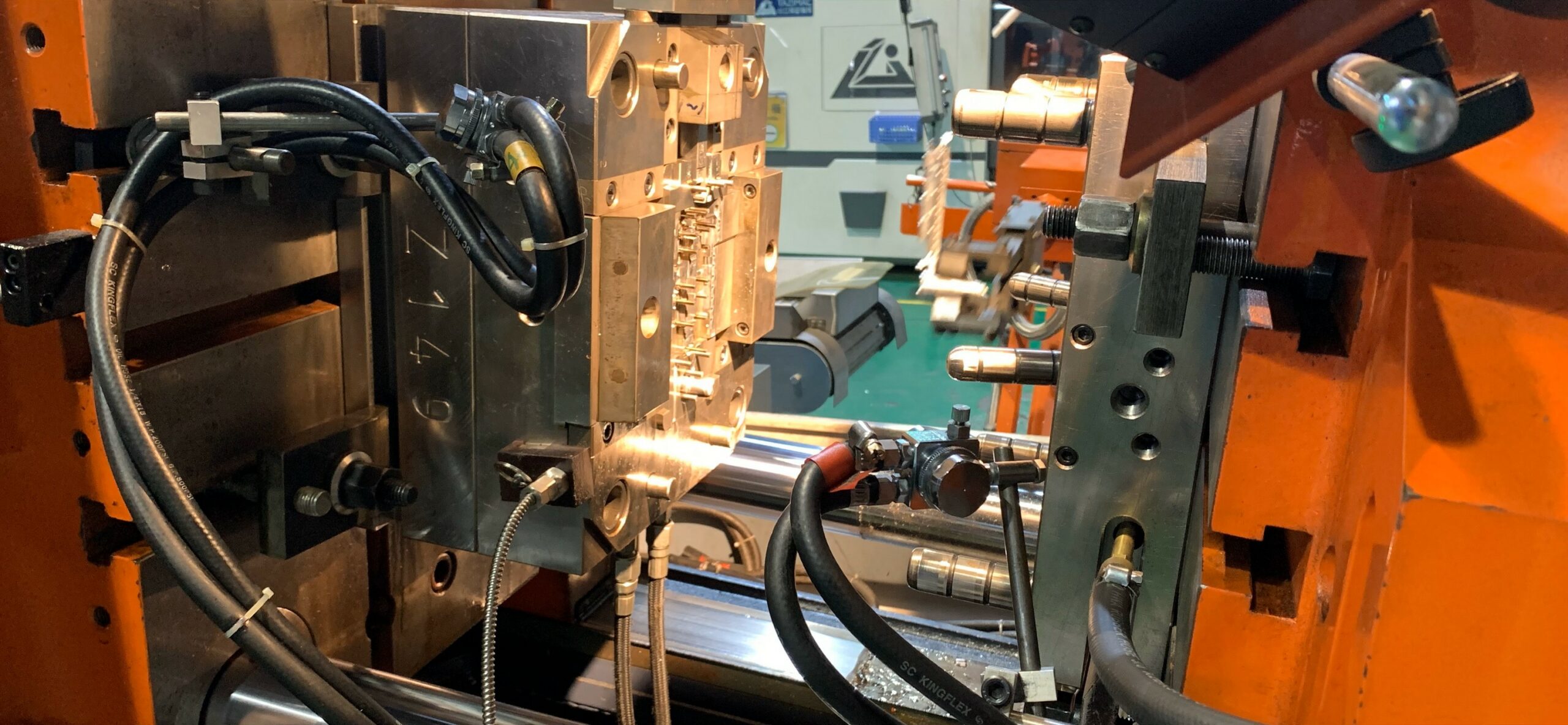Hot Chamber Diecasting Process Overview and Operating Parameters

Hot chamber diecasting is a high-pressure casting process commonly used for low melting point alloys like zinc, tin, lead, and certain magnesium alloys. It involves the integration of a melting pot into the diecasting machine itself, with the injection system immersed in the molten metal. This article provides an overview of hot chamber diecasting, analyzes its pros and cons, and delves into the specific operating parameters that play a crucial role in achieving optimal casting results.
Pros of Hot Chamber Diecasting:
- Efficiency: Hot chamber diecasting eliminates the need for a separate melting furnace, leading to higher production efficiency. The continuous availability of molten metal within the machine enables rapid and uninterrupted casting cycles.
- Quick Cycle Time: With molten metal always present, hot chamber diecasting minimizes metal transfer and melting time, resulting in shorter cycle times. This makes it ideal for high-volume production.
- Reduced Scrap: Continuous molten metal availability ensures consistent casting quality, minimizing material waste and scrap. Precise control over the injection process results in reduced material losses and improved cost-effectiveness.
- Enhanced Dimensional Accuracy: Hot chamber diecasting facilitates high dimensional accuracy due to immediate access to molten metal and reduced solidification-related defects. This ensures precise and consistent casting dimensions.
Cons of Hot Chamber Diecasting:
- Limited to Low Melting Point Alloys: Hot chamber diecasting is not suitable for high melting point alloys like brass, aluminum, and magnesium due to the high temperatures involved. The injection system components are prone to rapid wear and deterioration when exposed to these temperatures.
- Alloy Limitations: Alloys with a high affinity for iron, such as aluminum, can cause contamination and affect the alloy composition. This restricts the use of certain alloys in hot chamber diecasting.
- Limited Flexibility: The integrated melting pot restricts the use of different alloys within the same machine. Switching to a different alloy requires thorough cleaning of the injection system and melting pot, resulting in production downtime and reduced flexibility.
- Reduced Die Life: The continuous exposure of the injection system to high temperatures can significantly reduce component lifespan, leading to increased maintenance and replacement costs.

Operating Parameters in Hot Chamber Diecasting:
- Temperature Control: Precise temperature control is crucial. The melting pot temperature is set to the specific alloy’s melting point, while the injection system is maintained at a slightly lower temperature to prevent premature solidification.
- Injection Pressure: The force with which molten metal is injected into the die cavity must be appropriately set to achieve complete filling, optimal material flow, and compaction. It is controlled by the hydraulic system and can range from hundreds to thousands of psi or bar.
- Injection Speed: Adjusting the speed of injection influences filling patterns, casting quality, and the prevention of air entrapment or porosity. Injection speed is determined based on part complexity and can vary from slow to fast.
- Shot Size: The shot size, determining the volume of molten metal injected, depends on the mold cavity’s requirements, part design, and alloy characteristics. It can range from grams to kilograms.
- Die Temperature: Maintaining the proper die temperature is crucial for controlled solidification, minimizing defects, and ensuring optimal casting quality. Die temperatures typically range from around 150°C to 300°C.
- Cooling System: Effective cooling through channels or elements within the die helps dissipate heat, control solidification rates, and prevent distortion or cracking of the casting.
- Holding Time: The duration of molten metal remaining in the mold cavity after injection, holding time depends on alloy solidification behavior, part thickness, and die temperature. It can range from seconds to minutes.
Careful monitoring and adjustment of these parameters during the casting process are necessary to achieve consistent, high-quality castings in hot chamber diecasting.
In conclusion, hot chamber diecasting offers numerous advantages, including efficiency, quick cycle time, reduced scrap, and enhanced dimensional accuracy. However, it is limited to low melting point alloys, faces alloy compatibility challenges, restricts flexibility, and can reduce the lifespan of injection system components. By effectively controlling operating parameters such as temperature, pressure, speed, and shot size, manufacturers can optimize the hot chamber diecasting process and produce high-quality castings efficiently.

